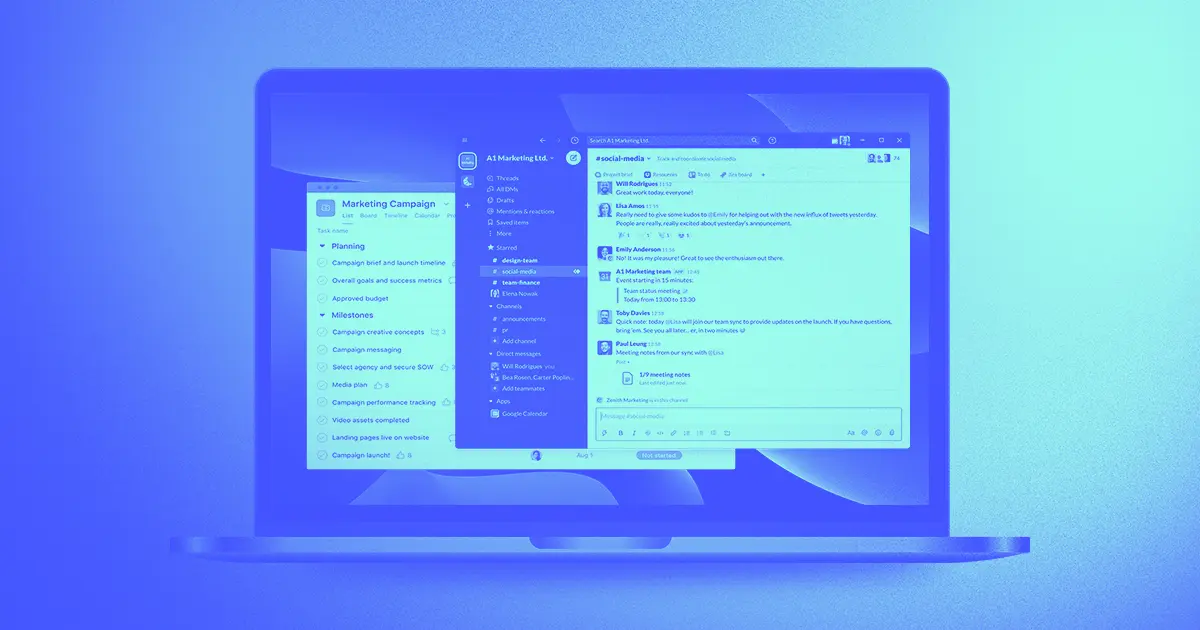Whether you’re an independent freelancer or running a service-based business, you likely need a simple way for people to book time with you.
Scheduling apps automate appointment booking, eliminating the need for emails or phone calls.
With everything that’s out there, picking the best scheduling systems and tools can feel overwhelming. The good news is that you have options. Here’s a closer look at some apps that might make appointment booking straightforward for you.
What are appointment scheduling apps?
Appointment scheduling apps let you manage booking requests online without endless email chains or phone calls. They streamline your schedule by showing real-time availability to clients, saving you effort while improving their experience.
Top appointment scheduling apps for booking client meetings
Here’s a quick overview of each tool’s main features and price points:
- Google Calendar: Straightforward scheduling, free for personal use, booking page with Business plan at $12/month
- Calendly: User-friendly interface, free basic plan, more features from $8/month
- Square Appointments: Customization, free for basic features, advanced options from $29/month
- Doodle: Fast setup, free with ads, Pro tier at $6.95/month
- Zoho Bookings: Advanced scheduling, $6/month Basic plan, $9/month Premium plan
- SimplyBook: Multiple booking channels, free for up to 50 bookings/month, paid plans start at $8.25/month
- Calendar: User-friendly, free basic plan, Standard plan $6/month
1. Google Calendar
If you’re already using Gmail, Google Calendar comes with a suite of tools built into your account. It’s the go-to scheduling tool for many teams and freelancers, offering an intuitive interface that makes setting up one-time or recurring client meetingsfast.
The system is flexible. You can create and view multiple client calendars, automatically set up video conferences with Google Meet or another platform, and sync appointments and tasks to one main calendar.

Google Calendar is incredibly user-friendly. If you’re looking for a tool that lets you set up appointments with a select group of contacts, it's probably all you need. However, if you want a dedicated booking page, you'll need a Google Workspace account and a paid Business plan.
Pricing: Google Calendar is free to use. Appointment booking pages are only available with the Google Workspace Business plan, which is $12 a month per user.
Takeaway: If you already rely on Gmail, Google Calendar is a straightforward option for basic scheduling.
2. Calendly
Calendly stands out with its user-friendly design. This appointment scheduling app lets you create a booking page that you can share or embed on your own website in minutes. The app has ameticulous layout, with a user-friendly interface that makes online scheduling a breeze, and it excels at time management too.
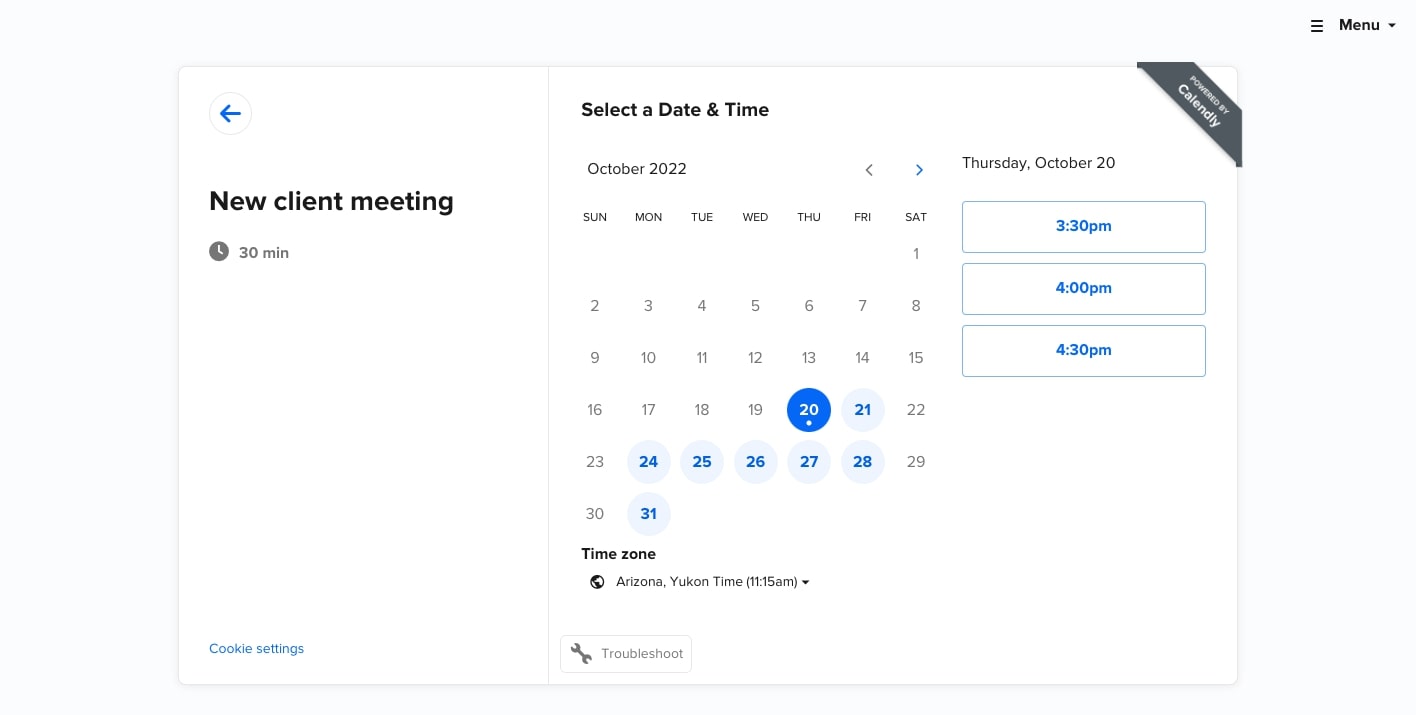
Along with its main booking system, Calendly offers workflows for client communications through its paid plans. One feature you might appreciate is Calendly’s automated email reminders and follow-ups, which saves you the time you'd spend reaching out yourself.
Pricing: Calendly has a free Basic plan that lets you set up an online scheduling calendar with a customized booking link and automated event notifications. If you need more features and customization, there’s an Essentials plan for $8/month and a Professional level for $12/month.
Takeaway: If you want a quick, user-friendly booking page with flexible integrations, Calendly is a solid choice.
3. Square Appointments
Square’s free scheduling app provides all the features that most freelancers and small businesses would need for an online appointment booking system.
If you’re looking for personalization, Square Appointments offers plenty of options. Color schemes, typography, and layout options can all be customized, giving you everything you need to create a booking page in line with your brand. Given the creative freedom and features, there’s a bit of a learning curve.
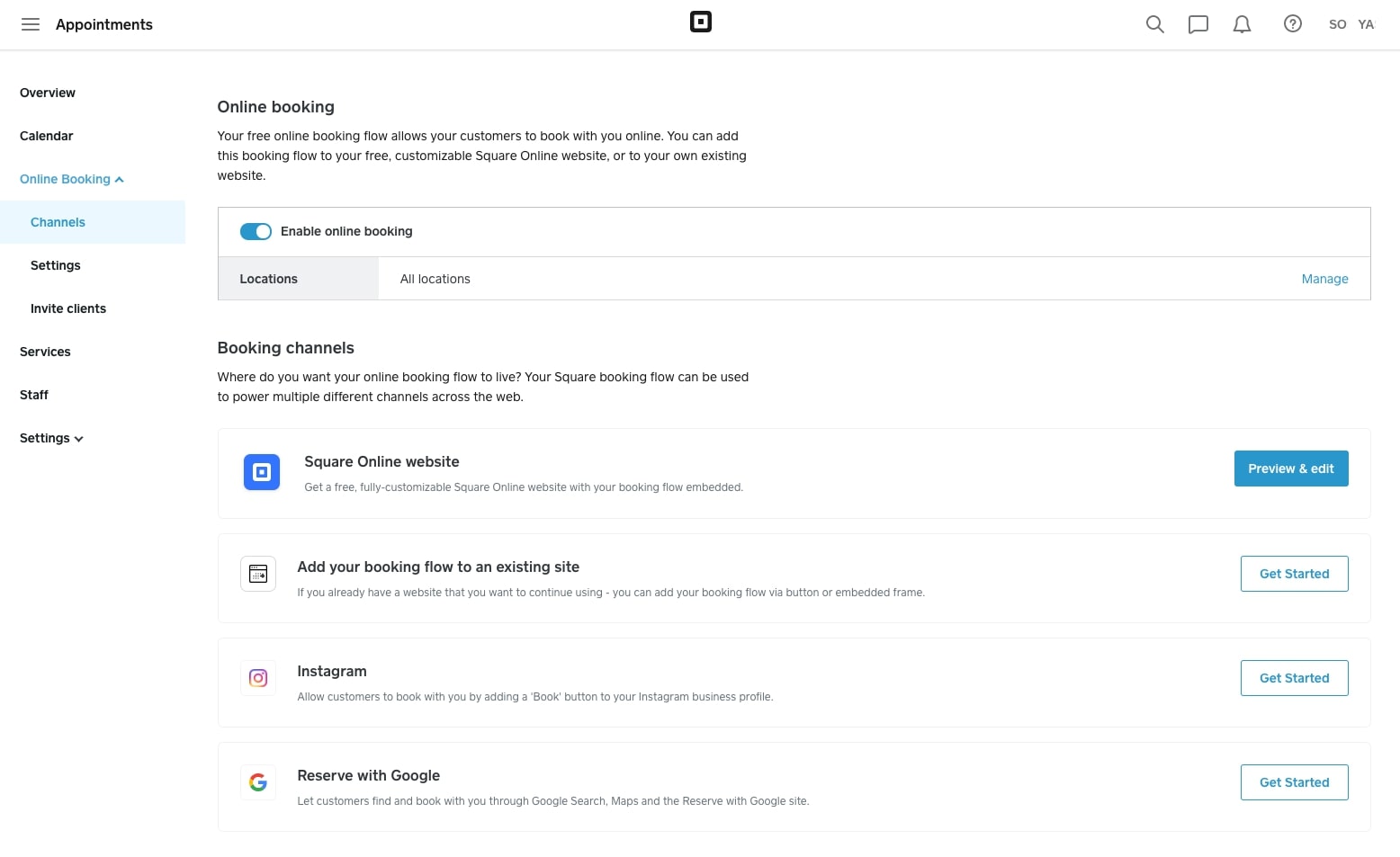
Pricing: The free plan likely has everything a freelancer needs, including automated SMS reminders and a mobile app for tracking bookings. It also includes a Book Now button that easily integrates with an Instagram business page. If you'd like Google Sync or text and email booking confirmations, you'll need to sign up for the Plus plan at $29/month.
Takeaway: If brand customization is important and you don't mind a learning curve, Square Appointments can fit your needs.
4. Doodle
Doodle offers a fast setup, guiding you through a few prompts to generate a booking page with a shareable URL. Its calendar sync lets you connect with Google Calendar or Office 365, so you can see upcoming bookings without confusion.
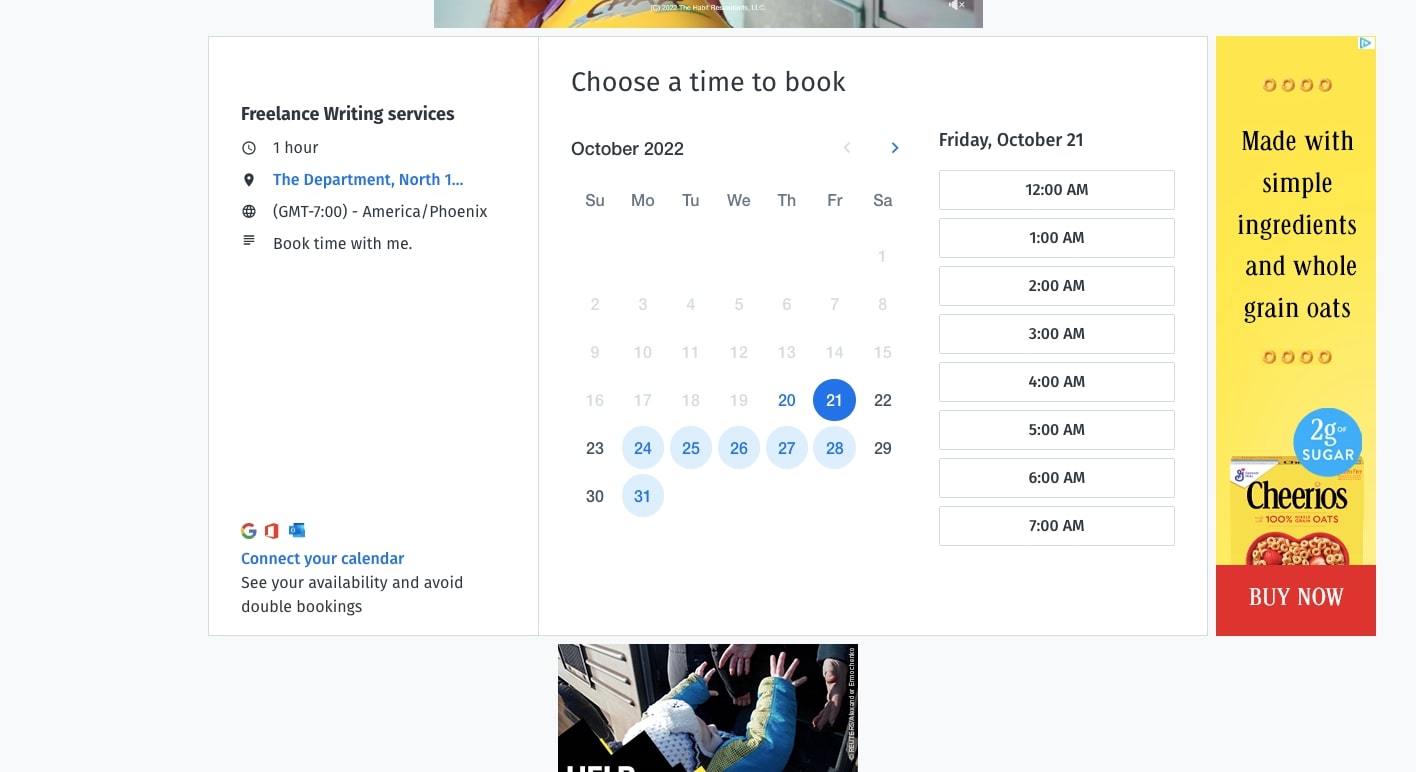
One drawback is the amount of ads with the free plan. Both your admin panel and booking page have ads, which can feel distracting.
Pricing: The Free plan is enough to get you started, but you'll have ads on your booking page. The Pro tier is $6.95 a month, ad-free, offers unlimited booking pages with custom branding, and includes conferencing through Microsoft Teams, Webex, and Zoom.
Takeaway: If you need a quick setup and don't mind ads in the free version, Doodle's straightforward approach could work for you.



















Grow your freelance business
Take on more clients and build websites faster. Webflow empowers freelancers to design and deliver with confidence, while keeping full creative control.
5. Zoho Bookings
Zoho Bookings is a solid option for those looking for a more advanced scheduling tool. Its industry-specific templates are visually appealing and offer user experiences geared toward different audiences. They also let your clients pay you ahead of time through Stripe, PayPal, and several other payment processing options if you sign up for their Premium plan.

Another advantage is the features discouraging no-shows and cancellations. You can set time limits for canceling or changing appointments and require a deposit. If you've dealt with the hassle of last-minute cancellations, you'll appreciate these features.
Pricing: Zoho Bookings’ Basic plan of $6/month offers color customization, Zoom and Zoho video conferencing, and a Zapier integration. If you want to accept online payments, sync with Zoho’s CRM, or need three or more workspaces, go with their Premium level for $9/month.
Takeaway: If you deal with frequent cancellations or want industry-specific templates, Zoho Bookings might be your best bet.
6. SimplyBook
SimplyBook offers quick setup, along with several well-designed themes that will work for almost any type of business. Instead of a one-size-fits-all approach, SimplyBook provides booking pages tailored for a wide range of industries, including beauty and wellness, sports and fitness, medical and health, and more.
SimplyBook also lets you accept bookings through Facebook and Instagram or through your own website via an embeddable widget. Having diverse ways to display your booking page can help you reach more potential clients.
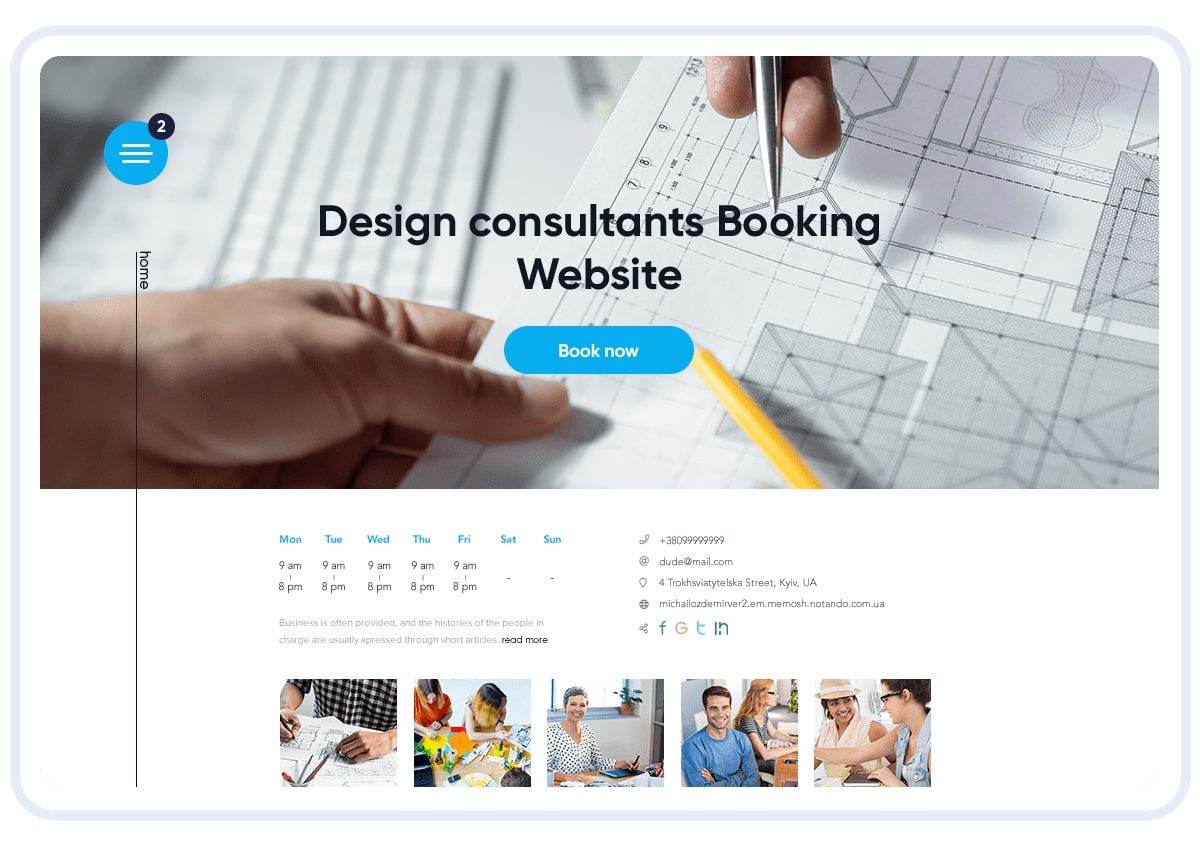
Pricing: If all you need are 50 bookings a month, the free plan will suffice. If you have multiple people on your team and need more bookings, you’ll have to go with one of their paid plans starting at $8.25/month.
Takeaway: If you want multiple ways for people to book with you, SimplyBook can be a flexible choice.
7. Calendar
Calendar is well established, with over 80,000 companies in its user base. It's a booking system with plenty of features, all in a lightweight interface.
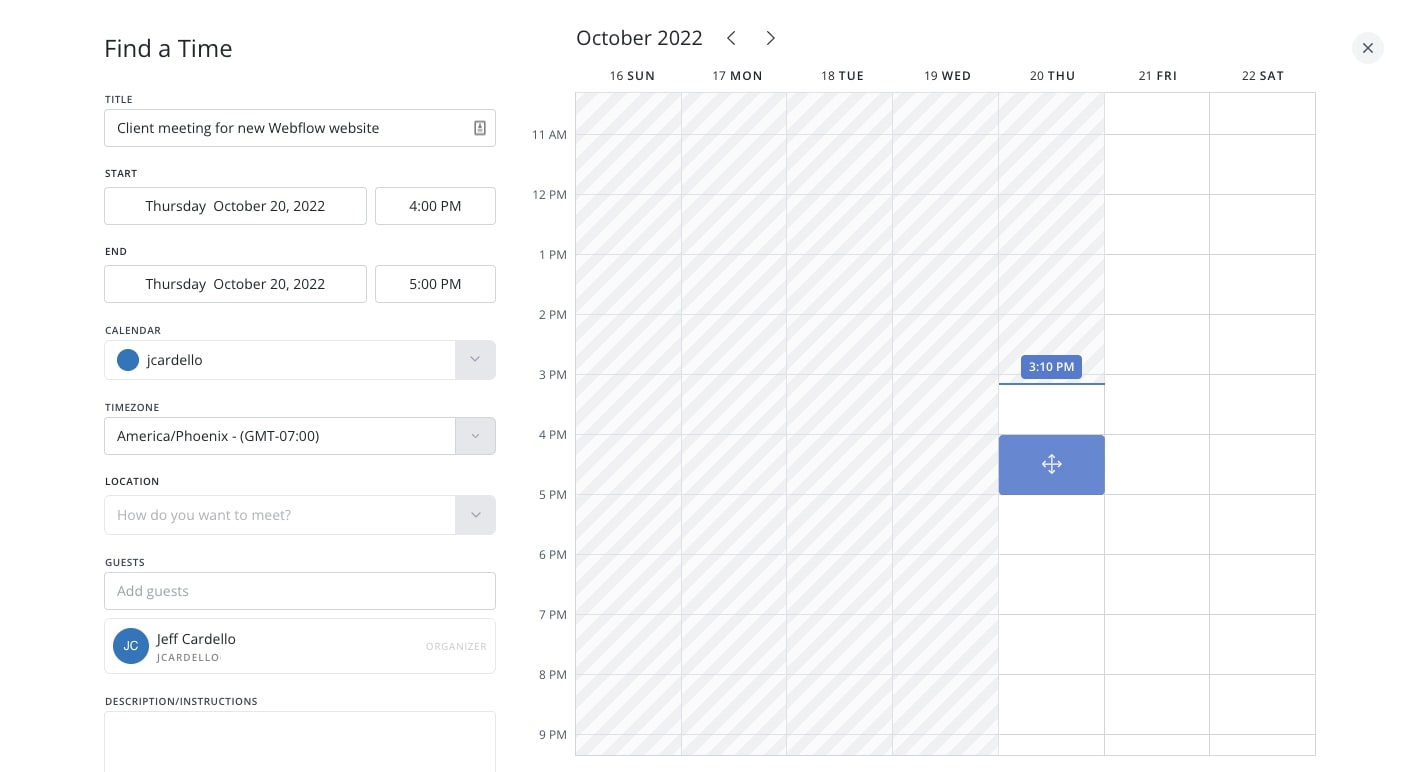
Scheduling appointments based on mutual availability is simple. Calendar factors in all your linked calendars to keep your availability updated. You send one link to clients, and they choose a slot from a standard calendar layout.
Pricing: The Free plan works well for individuals or small teams. It lets you sync one calendar (Google, Office 365, or Outlook) and invite up to five people per event. The Standard plan at $6/month expands these options and adds analytics and Zapier integration.
Takeaway: If you want a single link to share for scheduling, Calendar offers a simple approach with options to scale.
How appointment scheduling apps help you run a better business
Trying to juggle multiple appointments and email exchanges can waste your valuable time. Appointment scheduling apps let your clients choose a time that also works for them, helping you grow your business without extra hassle.
With so many aspects to running a business, you shouldn't have to worry about repeated back-and-forth. The right solution frees you to focus on what you love.
How to get started
Pick the scheduling app that best fits your needs and sign up for an account. Set your availability, integrate it with your calendar, and add the booking page to your website or social media channels. Test your booking flow, then share the link so clients can schedule without hassle.

Get started for free
Create custom, scalable websites — without writing code. Start building in Webflow.








